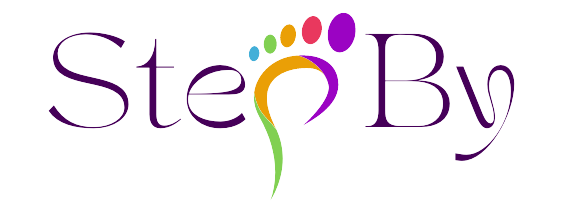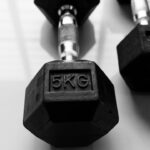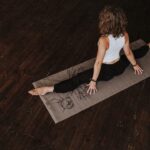Desk pain has become an all-too-familiar complaint in today’s fast-paced, technology-driven world. As individuals spend countless hours hunched over computers, the body often pays the price. This discomfort can manifest in various forms, including neck stiffness, shoulder tension, and lower back pain.
The sedentary lifestyle associated with desk jobs contributes significantly to these issues, as prolonged periods of immobility can lead to muscle tightness and joint stiffness. Understanding the root causes of desk pain is essential for developing effective strategies to alleviate it. The physical strain of sitting for extended periods can also lead to poor posture, which exacerbates discomfort.
Many individuals may not realize that their daily habits, such as slouching or leaning forward while typing, can contribute to their pain. Recognizing these patterns is the first step toward addressing them. By incorporating mobility exercises into their daily routine, individuals can counteract the negative effects of prolonged sitting and promote overall well-being.
This article will explore the importance of mobility in relieving desk pain and provide practical exercises to enhance flexibility and strength.
Key Takeaways
- Desk pain is a common issue caused by prolonged sitting and poor posture
- Mobility is crucial for relieving desk pain and preventing stiffness and discomfort
- Morning mobility flow can help improve flexibility, reduce tension, and increase energy levels
- Neck and shoulder stretches can alleviate tension and improve range of motion
- Incorporating breathing techniques and maintaining mobility throughout the day are essential for long-term pain relief
Importance of Mobility in Relieving Desk Pain
Mobility plays a crucial role in alleviating desk pain by promoting blood circulation and enhancing joint function. When individuals remain stationary for long periods, their muscles can become tight and fatigued, leading to discomfort and reduced range of motion. Engaging in mobility exercises helps to counteract these effects by encouraging movement and flexibility.
This not only aids in relieving existing pain but also serves as a preventive measure against future discomfort. Moreover, mobility exercises can help improve posture, which is vital for those who spend hours at a desk. By strengthening the muscles that support the spine and shoulders, individuals can maintain a more upright position while working.
This adjustment can significantly reduce strain on the neck and back, ultimately leading to a more comfortable work experience. Incorporating regular mobility routines into one’s day can foster a healthier relationship with work and promote long-term physical health.
Benefits of Morning Mobility Flow
Starting the day with a morning mobility flow offers numerous benefits that extend beyond immediate pain relief. Engaging in a series of gentle stretches and movements can help awaken the body, increase energy levels, and set a positive tone for the day ahead. This practice not only prepares the muscles for the physical demands of the day but also enhances mental clarity and focus.
Individuals who incorporate morning mobility flows often report feeling more alert and ready to tackle their tasks. Additionally, a consistent morning routine can establish healthy habits that carry throughout the day. By prioritizing mobility first thing in the morning, individuals are more likely to remain mindful of their posture and movement patterns as they go about their work.
This proactive approach can lead to a significant reduction in desk pain over time, as individuals become more attuned to their bodies’ needs. Ultimately, a morning mobility flow serves as a powerful tool for fostering both physical and mental well-being.
Neck and Shoulder Stretches
| Stretch Name | Description | Duration |
|---|---|---|
| Neck Side Stretch | Gently tilt your head to one side, bringing your ear towards your shoulder. Hold and then switch to the other side. | 15-30 seconds each side |
| Shoulder Roll | Roll your shoulders backwards in a circular motion, then switch to rolling them forwards. | 10-15 seconds |
| Neck Rotation | Slowly turn your head to one side, hold, then turn to the other side. | 15-30 seconds each side |
Neck and shoulder stretches are essential components of any mobility routine aimed at alleviating desk pain. The neck is particularly vulnerable to strain from prolonged computer use, leading to stiffness and discomfort. Simple stretches such as neck tilts and shoulder rolls can help release tension in these areas.
For instance, gently tilting the head to one side while keeping the opposite shoulder down can stretch the muscles along the side of the neck, providing immediate relief. Shoulder stretches are equally important, as tightness in this area can contribute to upper back pain and poor posture. Incorporating movements like arm circles or cross-body shoulder stretches can help improve flexibility and reduce discomfort.
These stretches not only target specific muscle groups but also promote relaxation, making them an ideal addition to a morning mobility flow. By dedicating time to neck and shoulder stretches, individuals can significantly enhance their overall comfort while working at a desk.
Upper Back and Spine Mobility Exercises
The upper back and spine are often neglected when it comes to mobility exercises, yet they play a vital role in maintaining overall posture and comfort. Many individuals experience tightness in these areas due to prolonged sitting, which can lead to a hunched posture over time. Incorporating upper back stretches such as cat-cow poses or thoracic rotations can help alleviate this tension and improve spinal mobility.
Engaging in spinal mobility exercises not only enhances flexibility but also strengthens the muscles that support proper alignment. Movements like seated twists or gentle backbends can promote better posture and reduce strain on the lower back. By focusing on upper back and spine mobility, individuals can create a more balanced body that is better equipped to handle the demands of desk work.
Regularly practicing these exercises can lead to lasting improvements in comfort and overall well-being.
Wrist and Forearm Stretches
Wrist and forearm stretches are often overlooked but are crucial for those who spend significant time typing or using a mouse. Repetitive motions can lead to discomfort or even conditions like carpal tunnel syndrome if not addressed properly. Simple stretches such as wrist flexor and extensor stretches can help alleviate tension in these areas.
By extending one arm forward with fingers pointing down and gently pulling back on the fingers with the opposite hand, individuals can effectively stretch the wrist flexors. In addition to static stretches, incorporating dynamic movements such as wrist circles or finger spreads can enhance flexibility and reduce stiffness. These exercises not only promote better circulation but also strengthen the muscles surrounding the wrist joint.
By dedicating time to wrist and forearm stretches during a morning mobility flow, individuals can prevent discomfort and maintain optimal hand function throughout their workday.
Hip and Lower Back Mobility Movements
Hip and lower back mobility movements are essential for counteracting the effects of prolonged sitting. Tight hips can lead to lower back pain, making it crucial to incorporate exercises that promote flexibility in this area. Movements such as hip openers or seated forward bends can help release tension in the hips while simultaneously stretching the lower back.
Additionally, incorporating dynamic movements like leg swings or lunges can enhance overall hip mobility. These exercises not only improve flexibility but also strengthen the muscles that support proper alignment in the lower body. By focusing on hip and lower back mobility during a morning routine, individuals can create a solid foundation for better posture and reduced discomfort throughout the day.
Ankle and Foot Mobility Exercises
Ankle and foot mobility exercises are often neglected but play a significant role in overall body mechanics. The feet serve as the foundation for movement, and tightness or stiffness in this area can lead to discomfort that radiates throughout the body. Simple exercises such as ankle circles or toe stretches can help improve flexibility and promote better balance.
Incorporating movements that engage the entire foot, such as calf raises or foot rolls on a massage ball, can further enhance mobility. These exercises not only target specific muscle groups but also promote better circulation throughout the lower extremities. By dedicating time to ankle and foot mobility during a morning routine, individuals can create a more stable base for movement, ultimately reducing discomfort associated with prolonged sitting.
Incorporating Breathing Techniques for Pain Relief
Breathing techniques are an often-overlooked aspect of pain relief that can significantly enhance the effectiveness of mobility exercises. Deep breathing promotes relaxation and helps reduce tension throughout the body, making it an ideal complement to physical movement. Techniques such as diaphragmatic breathing encourage individuals to engage their core while inhaling deeply through the nose and exhaling slowly through the mouth.
Incorporating breathing techniques into a morning mobility flow not only enhances relaxation but also improves focus and mental clarity. As individuals move through their stretches and exercises, synchronizing breath with movement can create a sense of mindfulness that further alleviates stress and tension. By prioritizing breathing alongside physical activity, individuals can cultivate a holistic approach to pain relief that addresses both body and mind.
Tips for Maintaining Mobility Throughout the Day
Maintaining mobility throughout the day is essential for preventing desk pain from returning after a morning routine. One effective strategy is to set reminders to take short breaks every hour, allowing time for quick stretches or brief walks around the office. These mini-breaks serve as opportunities to reset posture and relieve tension that may have built up during prolonged sitting.
Additionally, incorporating standing desks or ergonomic chairs can promote better posture and encourage movement throughout the day. Individuals should also be mindful of their sitting habits; adjusting chair height or using lumbar support can make a significant difference in comfort levels. By adopting these practices, individuals can create an environment that supports ongoing mobility and reduces the risk of desk-related discomfort.
Making Morning Mobility Flow a Daily Habit
In conclusion, establishing a morning mobility flow is an effective strategy for combating desk pain and promoting overall well-being. By dedicating time each day to engage in targeted stretches and movements, individuals can enhance flexibility, improve posture, and reduce discomfort associated with prolonged sitting. The benefits extend beyond immediate relief; incorporating these practices into daily routines fosters healthier habits that contribute to long-term physical health.
As individuals become more aware of their bodies’ needs throughout the day, they are better equipped to maintain mobility and prevent future discomfort. By prioritizing morning mobility flows alongside mindful movement practices during work hours, individuals can cultivate a lifestyle that supports both productivity and well-being. Ultimately, making morning mobility flow a daily habit empowers individuals to take control of their health while navigating the demands of modern work life.
FAQs
What is mobility morning flow?
Mobility morning flow is a series of movements and exercises designed to improve flexibility, reduce stiffness, and alleviate pain caused by prolonged sitting or desk work.
How many moves are included in the mobility morning flow?
The mobility morning flow consists of 10 specific moves that target different areas of the body, such as the neck, shoulders, back, hips, and legs.
What are the benefits of the mobility morning flow?
The mobility morning flow can help improve posture, reduce muscle tension, increase blood flow, and enhance overall mobility and range of motion. It can also help prevent and alleviate common desk-related pains and discomfort.
Can anyone do the mobility morning flow?
The mobility morning flow is designed to be accessible to people of all fitness levels and can be modified to accommodate individual needs and limitations. However, it is recommended to consult with a healthcare professional before starting any new exercise routine, especially for individuals with pre-existing medical conditions or injuries.
How long does it take to complete the mobility morning flow?
The mobility morning flow can typically be completed in 10-15 minutes, making it a convenient and time-efficient addition to a daily routine.
Is it necessary to warm up before doing the mobility morning flow?
While it is not mandatory to warm up before starting the mobility morning flow, it is generally recommended to perform some light stretching or gentle movements to prepare the body for the exercises. This can help reduce the risk of injury and improve the effectiveness of the flow.


